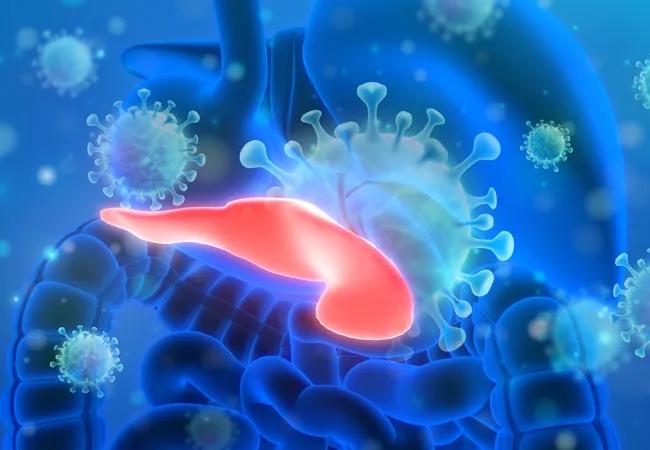Risk reduction guidelines

In addition to its effect on the respiratory system, new evidence indicates that COVID-19 can exacerbate symptoms of inflammatory bowel disease (IBD) and pancreaticobiliary disorders. A recent summary from Sara El Ouali, MD, Jessica Philpott, MD, PhD, John Vargo, MD, MPH and Miguel Regueiro, MD provides guidelines for treating patients with IBD and pancreatic diseases and for facilities that are resuming endoscopic procedures. The summary appeared in a collection of COVID-19 Curbside Consults from Cleveland Clinic Journal of Medicine.
Advertisement
Cleveland Clinic is a non-profit academic medical center. Advertising on our site helps support our mission. We do not endorse non-Cleveland Clinic products or services. Policy
Approximately one-third of COVID-19 patients present with gastrointestinal (GI) issues and these symptoms are especially common for IBD patients with COVID-19. IBD patients were also found to have higher rates of new-onset diarrhea, abdominal pain, endoscopically active disease and elevated biomarkers when compared to IBD patients without COVID-19. These findings indicate that COVID-19 may present as an IBD flare. Clinical assessment, in addition to COVID-19 testing and endoscopic evaluation, may be necessary to distinguish between an IBD exacerbation and symptoms caused by COVID-19.
It is important to note that IBD does not appear to increase risk of infection with COVID-19, and patients with IBD do not appear to have worse outcomes of COVID-19. However, corticosteroid use and moderate to severe disease activity are associated with higher rates of infection in these patients. Biologic treatment classes, on the other hand, were not found to impact infection rates among IBD patients, nor did increase the risk of severe infection.
As more data becomes available, management guidelines for IBD patients in the COVID-19 pandemic have been adjusted. However, as a result of the limited data available, these recommendations are largely based on expert opinion and consensus. These recommendations include:
Advertisement
The full list of recommendations is available here.
Although pancreatic and biliary disease have been described in patients with COVID-19, the exact role of COVID-19 in the context remains unclear. Elevated pancreatic enzymes appear to be associated with COVID-19. Although clinical pancreatitis is rare, cases of acute pancreatitis in patients have been observed. It is unclear whether COVID-19 induces pancreatic disease, so other causes of pancreatitis should still be considered.
During the pandemic, healthcare facilities postponed nonurgent endoscopic procedures following guidance from national GI societies. The long-term impact of this practice on patient care is yet to be determined, but there has been substantial immediate impact. In Hong Kong, the number of new GI cancer diagnoses decreased by 49.1% as procedural volumes were reduced by more than 50%.
Given the concerns about the presence of COVID-19 in the stool and the possible transmission of the virus through aerosolization during endoscopic procedures, the American Gastroenterological Association published recommendations for reducing infection risk. These include:
The American Gastroenterological Association has also published recommendations for helping endoscopy units to safely resume operations. These recommendations focus on preprocedural screening, cleaning, physical distancing and other preprocedural considerations. Routine preprocedural testing is not currently recommended. However, endoscopy units are encouraged to individualize their approach based on geographical prevalence of COVID-19, and the size and type of facility.
Advertisement
The full article with references from Cleveland Clinic Journal of Medicine’s COVID-19 Curbside Consults is available here.
Advertisement
Advertisement

Patients report improved sense of smell and taste

Clinicians who are accustomed to uncertainty can do well by patients

Unique skin changes can occur after infection or vaccine

Cleveland Clinic analysis suggests that obtaining care for the virus might reveal a previously undiagnosed condition

As the pandemic evolves, rheumatologists must continue to be mindful of most vulnerable patients

Early results suggest positive outcomes from COVID-19 PrEP treatment

Could the virus have caused the condition or triggered previously undiagnosed disease?

Five categories of cutaneous abnormalities are associated with COVID-19